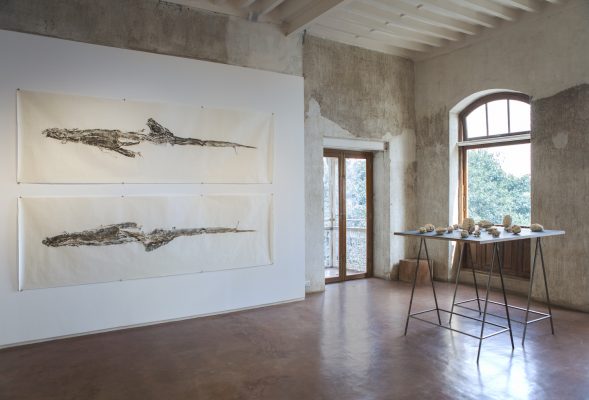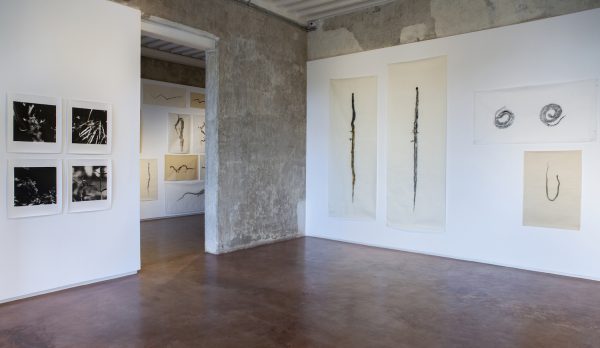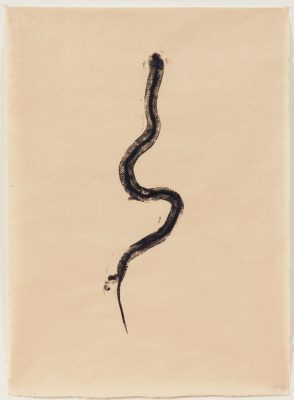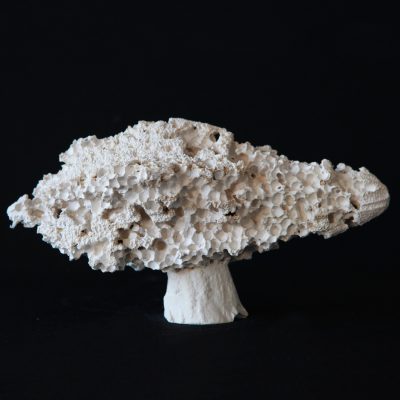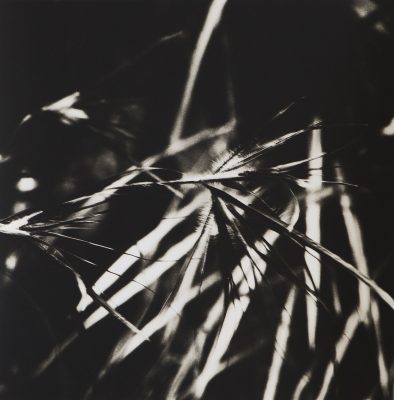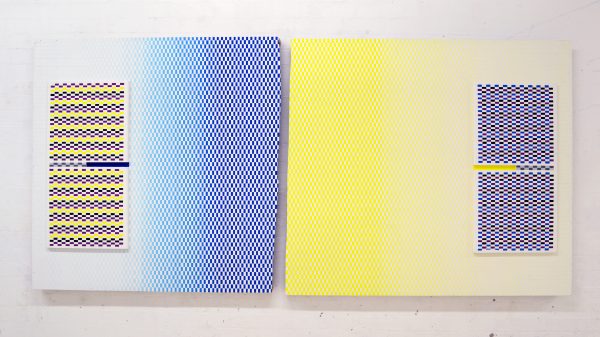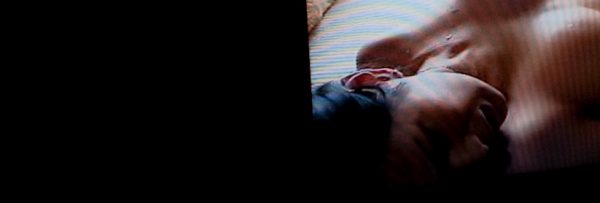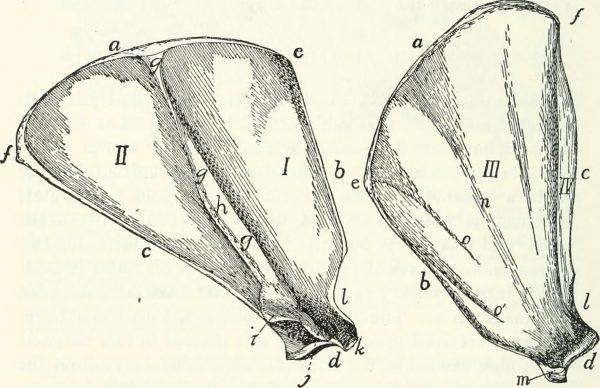I walked into Simryn Gill’s exhibition SOFT TISSUE at Jhaveri Contemporary on one of the worst days of an unusually dense winter smog in Mumbai. On the way over, driving slowly through sunset traffic, I stared straight into the sun: its whole circumference visible, its light diffuse and dull behind a thick curtain of pollution. Maybe soon we will forget what sunsets look like here, I thought, how the sun dips slowly into the sea. Smog like this is sad in a physical way; it is an injury that hangs over the city, seeping into its inhabitants. Birds fly in hysterical circles, blinded, their sense of direction askew.
Gill brings the injury into the gallery. A different kind of injury to the one the smog inflicts, perhaps, but still the injury of nature. For the series NAGA DOODLES (2017), she has collected snake roadkill: torn up membranes, snagging tissue, and ribbons of soft, delicate spines. Sometimes, flecks of blood and urine dot the paper, alongside gaping wide mouths with fine but broken teeth. Once, while on a drive, Gill noticed a dead snake on the side of the road and pulled over the car. She wanted to get closer to it. It was a cobra, and she brought it to her studio. Later, she rolled etching inks on to the carcass and took impressions of the inked snake by hand. Her cat had brought home a dead bird as a gift, and she had kept it in a ziplock bag in her fridge for a while. Eventually, she decided to print it. It was a bright, grey and yellow bird native to the South West Pacific: a type of honeyeater called a silvereye that migrates up and down from Tasmania. Legend has it that the silvereyes first arrived in the region carried by a storm. The bird’s Maori name, Taohou, translates as ‘stranger’. ‘The silvereye is a hoverer,’ Gill writers in a recent essay for SLUG, ‘you might see it floating alongside flower blooms, eating the nectar, or flitting from branch to branch in trees. How, I wondered, did the cat get his paws on such a lightly flickering target?’
Gill’s own works glimmer like lightly flickering targets. For SOFT TISSUE she presents three series: PUNCH DRUNK (2018), soft, white sculptures of fruit and vegetables; NAGA DOODLES (2017), seventy relief prints of roadkill snakes; and WEEDS OF MY PARENTS’ GARDEN (2018), darkroom C-print photographs of purple and pink-hued plants and flowers. She pays a deep formal attention to each medium, and the carefulness of her touch is visible throughout the work. Everything is kept impeccably clean. To make PUNCH DRUNK, Gill filled the hollows of melons, pumpkins and papayas with liquid plaster. Slowly, the plaster took the shape of the inner cavities, and after it had hardened, she left the upturned sculptures in the garden for birds and insects to clean up. They scurried away the seeds and specks of flesh, and Gill cleaned them to a chalky white calcium.
Gill lives between Port Dickson, Malaysia and Sydney, Australia. Something about her printing, pressing, rolling, etching and staining feels ancient, perhaps because each process requires an enormous amount of patience. She has also read about nineteenth-century missionaries in the South Pacific making prints of large plants. ‘I imagine them,’ she writes in SLUG, ‘burly bearded men, together turning the trundle of a printing press to squeeze a whole tree between the rollers.’ She was particularly taken by prints made from sections of coconut palm, but as much as she enjoys this image of people squeezing trees between rollers, she does not put the snakes through the press. ‘It might have been an interesting experiment,’ she tells me, ‘but gruesome.’ Instead, she uses a fine Japanese lining paper pliable enough to be bent around the snakes. The paper is typically used to back scrolls, and is toughened with crushed seashell powder or clay to prevent it from shrinking. The paper is suppler than most – it can be wet, stretched, pulled and wrapped without tearing. ‘I like these papers for their hidden strengths … they have disarmingly receptive surfaces.’
Gill’s work speaks to a contemporary anxiety without turning it into metaphor; it makes you slowly notice your own receptive surfaces. By showing us the fragility of nature, she points to our own, and to how the two are inseparable. In her tender reassembly, Gill does not bring things back to life, neither does she repair them. Instead, she seems to say, especially to those with apocalyptic imaginations, that perhaps all we can do now is make records. After she prints the snakes, she buries them in her garden.
